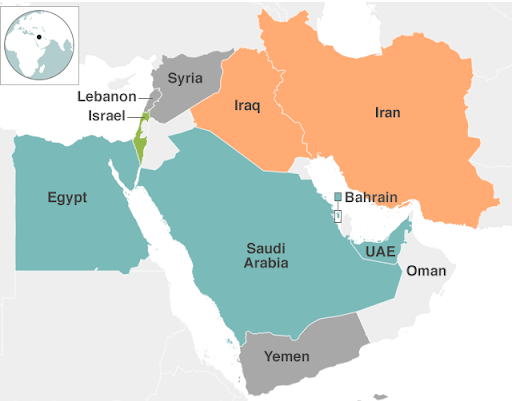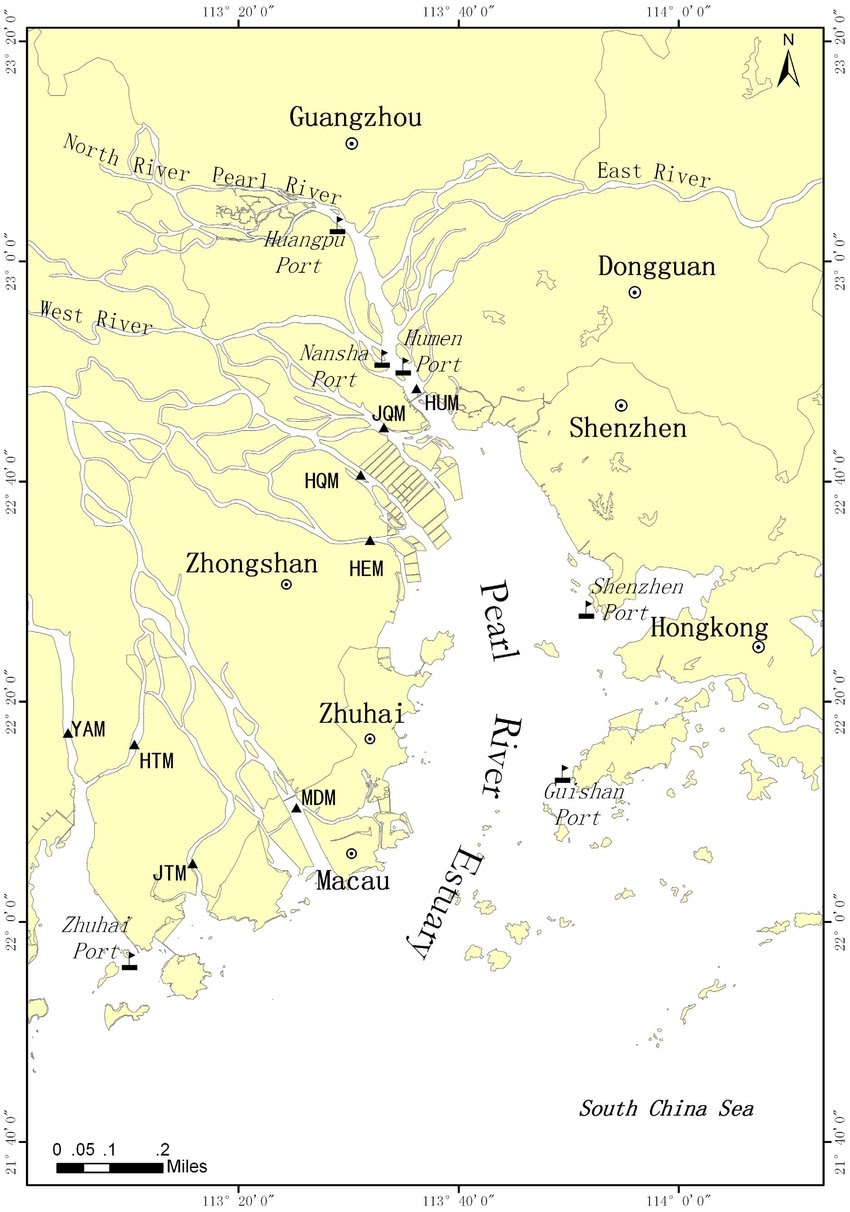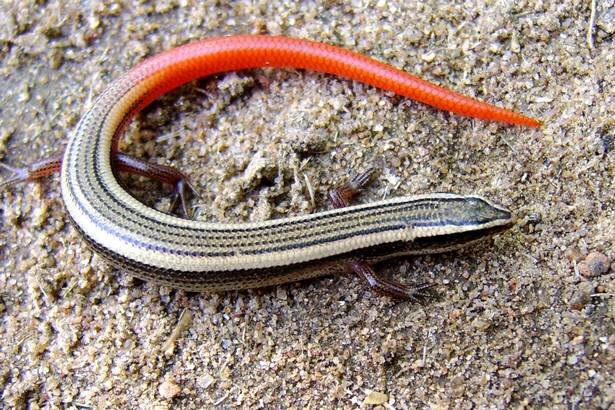Biodiversity & Environment
International Day for the Eradication of Poverty 2020
Why in News
Every year 17th October is observed as International Day for the eradication of Poverty.
- Its observance started in 1992 with the adoption of UN resolution.
- The theme for the year 2020 is "Acting Together to Achieve Social and Environmental Justice for All"
Key Points
- Poverty Trends: More than 90% countries have reported a dip in per capita income because of Covid-19 and the ensuing economic disruptions.
- More than 115 million new poor have been added to the world, and their spread is universal, from the rich Europe to the already poor Asia and from rural to urban areas.
- According to the latest "Poverty and Shared Prosperity Report" by the world bank, the Covid-19 pandemic is estimated to push an additional 88 million to 115 million people into extreme poverty this year, with the total rising to as many as 150 million by 2021.
- Beyond Income Poverty: India and Nigeria are two countries that host the world’s largest number of poor. Here, the poor live in very ecologically fragile areas. This makes poverty not alone an income related aspect as economists and politicians consider.
- The Ecology of Poverty:
- In India, the poorest regions are invariably the forested areas of the country in states like Chhattisgarh, Jharkhand and Madhya Pradesh.
- Some 275 million people in India depend on forest for subsistence. In the country’s poorest regions, forests provide up to 30% of their total income. This is more than agriculture and other sources of income.
- At the global level, just five countries—India, Bangladesh, Nigeria, Ethiopia and the Democratic Republic of Congo— account for half of the extreme poor in the world. Paradoxically, the above five countries, barring Congo, are also witnessing rapid economic growth.
- Various estimates say the natural capital accounts for 9% of wealth globally, but it accounts for 47% of the wealth in low income countries. This shows the dependence of people on natural resources in developing and poor countries.
- Poverty and Forest Dependence:
- A Food and Agriculture Organization (FAO) study shows that more than a billion people are forest-dependent, and most of them are below the poverty line. Most of them are in Africa and Asia.
- Poverty and Forest Dependence:
- The Geography of Poverty: The more the reliance on ecology/nature for survival, higher is the probability to be poor due to modern urban development.
- Regional Shift: In 1990, half of the world’s poor lived in East Asia and the Pacific. At present, sub-Saharan Africa and South Asia host over 85% of the poor in the world. Further, 26 of the world’s 27 poorest countries are in sub-Saharan Africa.
- In these regions, three-fourths of the total poor live in rural areas.
- These places have a highly degraded ecology (due to increasing exploitation of natural resources for development). Most of the poor depend on natural resources like land, forests and livestock for survival. So, for them, the economy is all about ecology. Degradation of the ecology, thus, leads to poverty.
- In these regions, three-fourths of the total poor live in rural areas.
- Regional Shift: In 1990, half of the world’s poor lived in East Asia and the Pacific. At present, sub-Saharan Africa and South Asia host over 85% of the poor in the world. Further, 26 of the world’s 27 poorest countries are in sub-Saharan Africa.
- In India, the poorest regions are invariably the forested areas of the country in states like Chhattisgarh, Jharkhand and Madhya Pradesh.
- Ecology and Entitlement: According to the International Union of Forest Research Organizations, forestry contributes at least $539 billion directly to the world Gross Domestic Product (GDP).
- Development has come with a heavy cost to the ecology. For instance, the latest the Intergovernmental Science-Policy Platform on Biodiversity and Ecosystem Services (IPBES) global assessment reported a decline in nature’s contributions to people since 1970.
- It clearly said that “extraction of provisioning services has increased, while provision of regulating and maintenance services has declined”.
- According to a study by the United Nations Environment Programme (UNEP) (covering 140 countries), the globally produced capital per head doubled and human capital per head increased by about 13%, but the value of the stock of natural capital per head declined by nearly 40% in 1992-2014.
- It means those who depend on the environment witnessed a decline in their assets thus triggering poverty.
- Development has come with a heavy cost to the ecology. For instance, the latest the Intergovernmental Science-Policy Platform on Biodiversity and Ecosystem Services (IPBES) global assessment reported a decline in nature’s contributions to people since 1970.
Way Forward
- The importance of ecology to overall world development including poverty eradication can be gauged from the fact that 86 out of 169 Sustainable Development Goals targets directly or indirectly seek to reduce environmental damage or emphasize the critical role of natural resources and ecosystem services.
- The deadline of “eradicating poverty” in all forms is just 10 years away (as per the SDG 2030 target). To achieve this goal itself makes “social and environmental” justice as the key to our poverty eradication plans and programmes.
- There are various reasons for environmental degradation that ultimately trigger poverty among the nature-dependent people. Climate change is the latest major factor.
- We need to focus on the ecological dimension of poverty also. When income comes from ecology, access to it becomes the sole way to eradicate poverty. Both access and entitlement for nature dependent people remains a key focus for poverty eradication.
International Relations
Israel and Bahrain Diplomatic Ties
Why in News
Bahrain and Israel are signing a joint communique on the establishment of diplomatic, peaceful and friendly relations, as well as a number of memorandums of understanding in areas of mutual benefit.
Key Points
- Bahrain has a history of open politics and civil society movements, although rights have been curtailed in the past decade.
- The decision to normalise ties comes from the belief in the values of tolerance in a region whose people have suffered from wars and conflicts.
- The United Arab Emirates and Bahrain became only the third and fourth Arab states to agree to normalise ties with Israel, following Israel’s 1979 peace deal with Egypt and a 1994 pact with Jordan.
- Under the deal, Israel would suspend its plans to annex large parts of the occupied West Bank.
- The West Bank is sandwiched between Israel and Jordan. One of its major cities is Ramallah, the de facto administrative capital of Palestine.
- Israel took control of it in the Six-day Arab-Israeli war, 1967 and has over the years established settlements there.
- Impact on the USA:
- This is the second deal in 2020 after the Israel-UAE Peace Deal brokered by the USA. The recognition grants a diplomatic win to the USA President Donald Trump ahead of the Presidential election.
- The deal buys UAE a lot of goodwill in the US, where its image has been tarnished by its involvement in the Yemen war.
- Saudi Arabia made clear that it will not normalise ties without a resolution to the Palestinian issue despite signs of rapprochement.
- Concerns:
- For Palestine:
- The Palestinians have not embraced the USA’s vision. 86% of Palestinians believed the normalization agreements with the UAE and Bahrain served only Israel’s interests and not their own.
- For Palestinians, who long have relied on Arab backing in their struggle for independence, the announcement marked both a win and setback for the Israel-Palestine relations.
- While the deal halts Israeli annexation plans of the west Bank, the Palestinians have repeatedly urged Arab governments not to normalize relations with Israel until a peace agreement establishing an independent Palestinian state is reached.
- Shia-Sunni rifts in the region may get wide and violent.
- Saudi Arabia (Sunni) and Iran (representing Shia) have a long history of enmity. For decades, one of the main sources of instability in West Asia has been the cold war between Saudi Arabia and Iran.
- The Sunni-Shiite schism may also provoke violence between Muslims in such places as Pakistan, Nigeria and Indonesia.
- For Palestine:
- Indian Interest in West Asia: A peaceful and prosperous West Asia is necessary for India. Such deals between Arab Countries and Israel are having a positive impact for Indian interests in the region. Also, difficulty in balancing Arab countries and Israel will become easy. Indian interests include:
- Geopolitical: West Asia occupies an important position in international relations due to its geographical location and proximity to continents and countries South Asia, China, Central Asia, Europe, and Africa.
- Energy: The region is strategically significant due to its enormous energy resources, trade route links to different parts of the world.
- It is the world's largest oil-producing region accounting for 34% of world production, 45% of crude oil exports and 48% of oil proven reserves.
- Diaspora: Indian expatriates have constituted a substantial share of the regional labour market.
- Remittances from the region constitute a major chunk of total remittances to India.
Way Forward
- A balance between Shia and Sunni, between Iran and Arab, is key to any sustainable peace.
- The US may be a pre-eminent power in the Middle East, but Russia has made a space for itself, spending a lot less money. In recent years, China has indicated its willingness to play a larger role in this region.
- India should make its moves before this market and this extended neighbourhood come under the Chinese sphere of influence.
- A deal that could, if played right, open the doors for a changed geopolitical arrangement in the Middle East should have a stronger Indian footprint.
Biodiversity & Environment
Delhi Air Pollution
Why in News
Recently, the Union Minister for Environment, Forest and Climate Change has highlighted that the air pollution is not a problem of Delhi and its corporations alone but that of a big airshed around it that includes the National Capital Region (NCR).
Key Points
- Airshed:
- In geography, an airshed is defined as a region in which the atmosphere shares common features with respect to the dispersion of pollutants; in other words, a region sharing a common flow of air.
- With reference to the air pollution in and around Delhi, the airshed includes Gurgaon, Faridabad, Ghaziabad, Noida, areas of Uttar Pradesh, Haryana and even Alwar in Rajasthan.
- Current Air Quality:
- The Air Quality Index (AQI) of Delhi has improved within the ‘poor’ category.
- As per a forecast from the Central government’s System of Air Quality and Weather Forecasting And Research (SAFAR) the AQI is expected to stay in the higher end of ‘poor’ to the lower end of ‘very poor’ category for the following days.
- During the lockdowns, Delhi saw among the cleanest air since comprehensive records have been kept since 2015.
Air Pollution in Delhi
- Air pollution in Delhi-NCR and the Indo Gangetic Plains is a complex phenomenon that is dependent on a variety of factors.
- Change in Wind Direction:
- October usually marks the withdrawal of monsoons in Northwest India and during this time, the predominant direction of winds is northwesterly.
- The direction of the wind is northwesterly in summers as well, which brings the dust from northern Pakistan and Afghanistan.
- Reduced Wind Speed:
- High-speed winds are very effective at dispersing pollutants, but winters bring a dip in wind speed overall as compared to in summers which makes the region prone to pollution.
- Also, Delhi lies in a landlocked region which does not have a geographical advantage that eastern, western or southern parts of the country enjoy where the sea breeze disperses the concentrated pollutants.
- Stubble Burning:
- Stubble burning in Punjab, Rajasthan and Haryana is blamed for causing a thick blanket of smog in Delhi during winters.
- It emits large amounts of toxic pollutants in the atmosphere which contain harmful gases like methane (CH4), carbon monoxide (CO), volatile organic compounds (VOC) and carcinogenic polycyclic aromatic hydrocarbons.
- Farm fires have been an easy way to get rid of paddy stubble quickly and at low cost for several years.
- Stubble burning in Punjab, Rajasthan and Haryana is blamed for causing a thick blanket of smog in Delhi during winters.
- Vehicular Pollution:
- It is one of the biggest causes of dipping air quality in Delhi in winters and around 20% of PM2.5 in winters comes from it.
- Dust Storms:
- Dust storms from Gulf countries enhance the already worse condition. Dry cold weather means dust is prevalent in the entire region, which does not see many rainy days between October and June.
- Dust pollution contributes to around 56% of PM10 and the PM2.5 load.
- Dip in Temperatures:
- As temperature dips, the inversion height is lowered and the concentration of pollutants in the air increases when this happens.
- Inversion height is the layer beyond which pollutants cannot disperse into the upper layer of the atmosphere.
- As temperature dips, the inversion height is lowered and the concentration of pollutants in the air increases when this happens.
- Firecrackers:
- Despite the ban on cracker sales, firecrackers are a common sight on Diwali. It may not be the top reason for air pollution, but it definitely contributed to its build-up.
- Construction Activities and Open Waste Burning:
- Large-scale construction in Delhi-NCR is another culprit that is increasing dust and pollution in the air. Delhi also has landfill sites for the dumping of waste and burning of waste in these sites also contributes to air pollution.
Major Measures Taken
- Subsidy to farmers for buying Turbo Happy Seeder (THS) which is a machine mounted on a tractor that cuts and uproots the stubble, in order to reduce stubble burning.
- The introduction of BS-VI vehicles, push for electric vehicles (EVs), Odd-Even as an emergency measure and construction of the Eastern and Western Peripheral Expressways to reduce vehicular pollution.
- Implementation of the Graded Response Action Plan (GRAP) to tackle the rising pollution in the Capital. It includes measures like shutting down thermal power plants and a ban on construction activities.
- Development of the National AQI for public information under the aegis of the Central Pollution Control Board (CPCB). AQI has been developed for eight pollutants viz. PM2.5, PM10, Ammonia, Lead, nitrogen oxides, sulfur dioxide, ozone, and carbon monoxide.
Way Forward
- Appropriate political will and aware citizenry is a prerequisite to tackle the menace, otherwise, all the measures will remain on paper only and greater public transparency is essential to the success of winning the war on air pollution.
- There is no better watchdog than active citizens, which is why the pollution targets must be made public every year for their perusal and to be evaluated at the end of the year.
- Breathing clean air is a fundamental right of every Indian citizen. Therefore, human health must become a priority when it comes to tackling air pollution.
Governance
Ghar Tak Fibre Scheme: Bihar
Why in News
Recently, the Prime Minister of India inaugurated ‘Ghar Tak Fibre’ scheme in Bihar.
Key Points
- Ghar Tak Fibre Scheme:
- It aims to connect all 45,945 villages of Bihar with high-speed optical fibre internet by 31st March 2021.
- Under the scheme, Bihar has to provide at least five fibre-to-the-home (FTTH) connections per village and at least one WiFi hotspot per village.
- The Scheme will be implemented by the Ministry of Electronics and Information Technology.
- Benefit:
- The Scheme will lead digital services including e-Education, e-Agriculture, Tele-Medicine, Tele-law and other social security schemes in Bihar ensuring easy access to all state natives.
- It is also likely to boost the local employment generation with the implementation of Bharat Net initiative which will be done by recruiting local workers.
- Internet Penetration in Bihar:
- According to TRAI’s report, only 30.35% Bihar’s population has internet connectivity, much below India's population connectivity of 55%.
- Only 22.61% of the rural Bihar have an internet connection. Compared to this Kerala has 98.10% rural internet connectivity.
- Bihar also has the lowest urban internet subscribers amounting to 73.26% of the urban population. States like Madhya Pradesh, Andhra Pradesh, Tamil Nadu, and West Bengal all have an urban subscriber base above 90%.
- However, of the 8,745 gram panchayat (GP) in Bihar, almost all are connected to the state’s main internet grid under BharatNet Project.
- BharatNet, a special purpose vehicle envisaged in 2011, was an ambitious plan to connect all the 2,50,000 gram panchayats through a high-speed optical network.
- Initially it was launched as National Optical Fibre Network (NOFN), it was renamed as BharatNet Project in 2015.
- Under the BharatNet Project a village or a gram panchayat (GP) is considered ‘lit up’ when it consistently has internet connection and users at the end to verify the same.
- BharatNet, a special purpose vehicle envisaged in 2011, was an ambitious plan to connect all the 2,50,000 gram panchayats through a high-speed optical network.
- Challenges:
- Of all the GPs of Bihar connected under phase one, 3,591 gram panchayats are non-operational, while the status of another 200 is unclear.
- The main problems are lack of power and related equipment failure, equipment theft, and faulty fibre.
- While optical fibre cable has been laid to connect nearly all the GPs, lack of users in these areas has resulted in minimal or zero follow-ups on repair and maintenance work.
Way Forward
- The Ghar Tak Fibre scheme marks a step towards the prime minister’s announcement on 15th August 2020, that all six lakh villages in India will be connected with optical fibre internet in the next 1,000 days (by 2024).
- India’s telecom sector has come a long way through the adoption of mobile technologies. However, for India to emerge as a dominant digital economy, the government needs to prioritize achievable targets and ensure the implementation of the initiatives.
Biodiversity & Environment
Dolphins in Pearl River Estuary
Why in News
According to a recent report, Chinese pink dolphins are making a comeback in the Pearl River Estuary (PRE).
- Indo-Pacific humpback dolphins are also known as Chinese white dolphins or pink dolphins, reflecting the colour of their skin.
Key Points
- Pearl River Estuary:
- It includes Hong Kong, Macau as well as the mainland Chinese cities of Shenzhen, Guangzhou and Dongguan. Around 22 million people live in the area.
- The Pearl River Delta, the low-lying area surrounding the PRE where the Pearl River flows into the South China Sea, is one of the world’s most densely urbanised, heavily industrialised and busiest shipping lanes on Earth.
- Current Scenario and Reasons Behind:
- Dolphins use echolocation to find their way in the water and the ships often disturb them in finding their way and even kill them.
- Echolocation is a technique used by bats, dolphins and other animals to determine the location of objects using reflected sound.
- This allows the animals to move around in pitch darkness, so they can navigate, hunt, identify friends and enemies, and avoid obstacles.
- However, dolphin numbers in the waters between Hong Kong and Macau have seen a rebound in 2020 because Covid-19 pandemic has stopped ferries and hence reduced their traffic.
- The number of pink dolphins in the waters has roughly increased by a third according to scientists.
- Dolphins use echolocation to find their way in the water and the ships often disturb them in finding their way and even kill them.
- Indo-Pacific Humpback Dolphin:
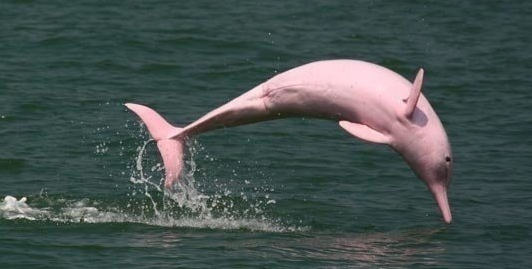
- Scientific Name: Sousa Chinensis.
- Habitat Range:
- Its total range is in coastal waters from central China southward throughout Southeast Asia and westward to the Bay of Bengal, with highest densities in and around estuaries.
- The distribution is fragmented such that these dolphins are apparently absent from fairly long stretches of coastline. It is not always clear whether the fragmentation is ‘natural’ or caused by human activities.
- The World Wildlife Fund for Nature (WWF) says the population in the PRE is believed to be around 2,500, but falling numbers of young could reduce numbers in future.
- They have seen a decline in their numbers in the past 15 years by 70-80%.
- Threats:
- Agricultural, industrial, and urban pollution.
- Overfishing.
- Marine construction including bridge-building and land creation for airport expansion and residential/office development.
- Transport including fast ferries.
- Selling into captivity at marine “entertainment” parks and aquariums worldwide.
- Effects:
- Loss of suitable habitat, the mortality of dolphins from entanglements and vessel strikes, and the possible effects of chemical, sewage and noise pollution on their health.
- Conservation:
- IUCN Status: Vulnerable.
Science & Technology
Naval Version of BrahMos Tested
Why in News
A naval version of the BrahMos supersonic cruise missile was successfully test-fired from an indigenously built stealth destroyer (INS Chennai) of the Indian Navy in the Arabian Sea.
Key Points
- BrahMos: It is a joint venture between the Defence Research and Development Organisation of India (DRDO) and the NPOM of Russia.
- Brahmos is named on the rivers Brahmaputra (India) and Moskva (Russia).
- It is a supersonic missile travelling at a speed of Mach 2.8 (nearly three times the speed of sound)
- It is the world’s fastest supersonic cruise missile.
- It is a multiplatform i.e it can be launched from land, air, and sea and multi capability missile with pinpoint accuracy that works in both day and night irrespective of the weather conditions.
- It is, therefore, used by all three forces, the Army, Navy and the Air Force.
- It operates on the "Fire and Forget" principle i.e it does not require further guidance after launch.
- It is the heaviest weapon to be deployed on Sukhoi-30 MKI fighter aircraft, with a weight of 2.5 tonnes.
- Its range has been recently enhanced from 300 Km to 450-600 Km,
- Increasing the missile’s range became possible after India’s induction into the Missile Technology Control Regime (MTCR) in June 2016.
- The missile features indigenous Booster and Airframe Section, along with many other indigenous sub-systems.
- Advantages:
- BrahMos has been deployed in Ladakh as well as the Eastern Sector in Arunachal Pradesh to tackle any threats in the ongoing standoff with China.
- Enhanced use of indigenous technologies will give a boost to India’s AtmaNirbhar Bharat.
- Increasing indigenous content in defence systems has also been a prime focus of Defence Acquisition Procedure, 2020 and draft Defence Production and Export Promotion Policy 2020.
- Recent Defence Testing:
Biodiversity & Environment
Skinks of India
Why in News
Recently, the Zoological Survey of India (ZSI) brought a study on skinks (a kind of lizard), titled Skinks of India.
Key Points
- Skinks:
- With 1,602 species of skinks across the world, It is the largest family of lizards, having long bodies, relatively small or no legs, no pronounced neck and glossy scales.
- It is found around homes, garages, and open spaces such as sparks and school playgrounds, and around lakes.
- Skinks are non-venomous, highly alert, agile and fast moving and actively forage for a variety of insects and small invertebrates.
- They have a prominent role in maintaining ecosystems, however, not much is known about their breeding habits, and ecology because identification of the species can be confusing.
- In India skinks are found in all kinds of habitats in the country, from the Himalayas to the coasts and from dense forests to the deserts.
- The Study:
- It gives a phylogenetic (evolutionary development) and bio-geographical analysis of distribution of these species in all the 11 bio-geographic zones of India.
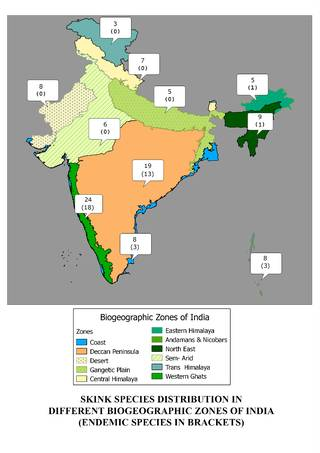
- India is home to less than 4% of the skinks across the globe. 62 species of skinks are found in India and about 57% of them (33 species) are endemic.
- India is home to 16 genera of skinks, four of which are endemic. The four genera of skinks are:
- Sepsophis: Sepsophis punctatus is endemic to the northern part of Eastern Ghats
- Barkudia: They are limbless skinks found in the hills and coastal plains of the eastern coast.
- Barkudia insularis is believed to be found only in the Barkud Island in Chilka lake in Odisha.
- Barkudia melanosticta is endemic to Visakhapatnam.
- Kaestlea: They are also known as blue-tailed ground skinks and are endemic to the Western Ghats.
- Ristella: They are also known as Cat skinks and endemic to the southern part of Western Ghats.
- It gives a phylogenetic (evolutionary development) and bio-geographical analysis of distribution of these species in all the 11 bio-geographic zones of India.
Zoological Survey of India
- The Zoological Survey of India (ZSI), a subordinate organization of the Ministry of Environment, Forest and Climate Change was established in 1916.
- It is a national centre for faunistic survey and exploration of the resources leading to the advancement of knowledge on the exceptionally rich faunal diversity of the country.
- It has its headquarters at Kolkata and 16 regional stations located in different geographic locations of the country.
Important Facts For Prelims
SLINEX-20: India- Sri Lanka Naval Maritime Exercise
Why in News
The 8th edition of annual India – Sri Lanka bilateral naval maritime exercise, SLINEX-20 will be held at Trincomalee, Sri Lanka from 19 to 21 October 2020.
- The 7th edition of SLINEX was conducted off Visakhapatnam in September 2019. SLINEX series of bilateral maritime exercises were initiated in 2005.
Key Points
- Aim:
- SLINEX aims to enhance interoperability, improve mutual understanding and exchange best practices and procedures for multi-faceted maritime operations between both navies.
- It exemplifies the deep engagement between India and Sri Lanka which has strengthened mutual cooperation in the maritime domain.
- The 2020 Exercise:
- In SLINEX-20, the Indian Navy will be represented by Indigenously built ASW corvette Kamorta and Kiltanunder.
- Indian Navy Advanced Light Helicopter (ALH) and Chetak helicopters and Dornier Maritime Patrol Aircraft will also be participating.
- The Sri Lanka Navy will be represented by SLN Ships Sayura (Offshore Patrol Vessel) and Gajabahu (Training Ship).
- The maritime exercise will also showcase capabilities of India’s indigenously constructed naval ships and aircraft.
- Surface and anti-air exercises including weapon firing, seamanship evolutions, manoeuvres and cross deck flying operations are planned during the exercise, which will further enhance the high degree of interoperability already established between the two friendly navies.
- In SLINEX-20, the Indian Navy will be represented by Indigenously built ASW corvette Kamorta and Kiltanunder.
- Covid Impact:
- The exercise is being conducted in a non-contact ‘at-sea-only’ format in the backdrop of Covid-19 pandemic.
- Outcome:
- The exercise plays a significant role in strengthening bilateral ties and also reiterating India’s policy of ‘Neighbourhood First’ and‘Security and Growth for all in the Region (SAGAR)’.
| Important Bilateral and Multilateral Defence Exercises | |
| Indra | India-Russia Naval Exercise |
| Malabar | US-India-Japan Naval Exercise |
| Varuna | France and India Naval Exercise |
| Simbex | India and Republic of Singapore Naval Exercise |
| Ibsamar | India, Brazil and South Africa Naval Exercise |
| Konkan | India and Britain Naval Exercise |
| Ausindex | India and Australia Naval Exercise |
| Naseem Al-Bahr | India-Oman Naval Exercise |

